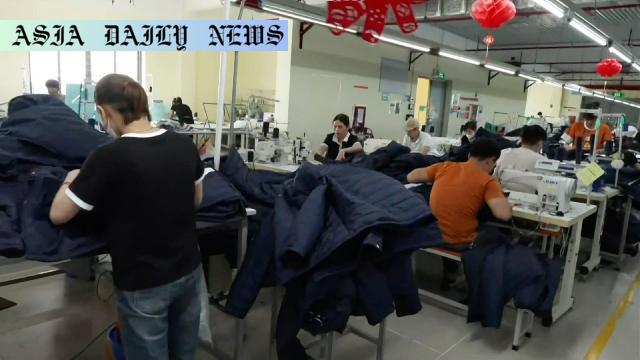Garment exports: Vietnam factory ramps up production as US tariffs approach, threatening key industry and export dynamics.

Garment Exports: A Backbone of Vietnam’s Economy
Vietnam’s garment manufacturing industry represents a cornerstone of its economy, employing approximately three million people and accounting for substantial contributions to the country’s GDP. The sector’s success stems from its ability to offer competitive pricing, quality craftsmanship, and a reliable supply chain that caters to international clients. Over 40% of Vietnam’s garment export value is attributed to the United States, which underscores the industry’s heavy reliance on its trade relations with North America.
Challenges Posed by US Tariffs
As the Trump administration’s pause on tariff hikes edges closer to expiring, Vietnamese garment manufacturers face heightened uncertainty. One such factory, based in northern Vietnam and employing 4,000 workers, has been accelerating its production to ship goods before potential tariff hikes take effect. If tariffs were to increase, the factory president notes that higher costs would force importers to increase their prices, which in turn might deter American consumers. The knock-on effect could diminish purchasing power, leading to lower demand for Vietnamese clothing in the US market.
Facing an Uncertain Future
In an acknowledgment of these risks, many in the industry are exploring alternative strategies. The factory’s president mentions potential diversification, eyeing other markets such as Russia to reduce reliance on the US. While such a shift is strategic, it isn’t without challenges. Building new trade relationships and navigating socio-political factors in markets like Russia requires a carefully considered approach.
Preparing for the Long-Term
Although the immediate priority is to capitalize on the current US market access before tariff hikes, Vietnam’s garment industry must prepare for a long-term reshaping of its strategies. This includes investing in automation, enhancing product quality, and expanding its global footprint to cater to diverse markets. By doing so, Vietnam’s garment sector can safeguard its economic contributions while adapting to a dynamically changing global trade environment.
Commentary
Vietnam’s Resilience in the Face of Economic Challenges
The story of Vietnam’s garment industry reflects the resilience and adaptability necessary to navigate a rapidly evolving global trade landscape. This sector’s vital role in the economy, with millions of jobs and significant export value, cannot be understated. However, as seen in the current situation, reliance on a single market—albeit a lucrative one like the United States—presents inherent risks. At a time when US tariff policies remain uncertain, Vietnam is taking proactive steps to adapt, and this adaptability will ultimately serve as a strength.
Complexities of Shifting Export Markets
Looking beyond the US market is a logical step for Vietnam’s garment manufacturers. Yet, penetrating other markets comes with its share of complexities. For instance, markets like Russia offer opportunities but also pose logistical and geopolitical challenges. Diversification is a sound strategy but requires investment in market research, supply chain realignment, and understanding consumer preferences in new regions. Vietnam’s ability to diversify and reduce its reliance on one nation will be crucial to its economic stability.
Consumer Implications and Collaboration
The implications of these challenges extend beyond manufacturers to consumers. Rising costs due to increased tariffs may translate to higher retail prices, impacting purchasing decisions. This underlines the importance of collaborative global trade policies that favor fair practices and mutual growth. Policymakers, industry stakeholders, and businesses must work together to find balanced solutions.
Adapting to An Evolving Trade Environment
Ultimately, Vietnam’s response to the US tariff threat showcases a nation adapting to global uncertainties with pragmatism and foresight. While challenges remain, the country’s willingness to embrace change and diversify its trade dependencies highlights the potential for long-term economic resilience. Other nations and industries facing similar hurdles could draw lessons from Vietnam’s example.


